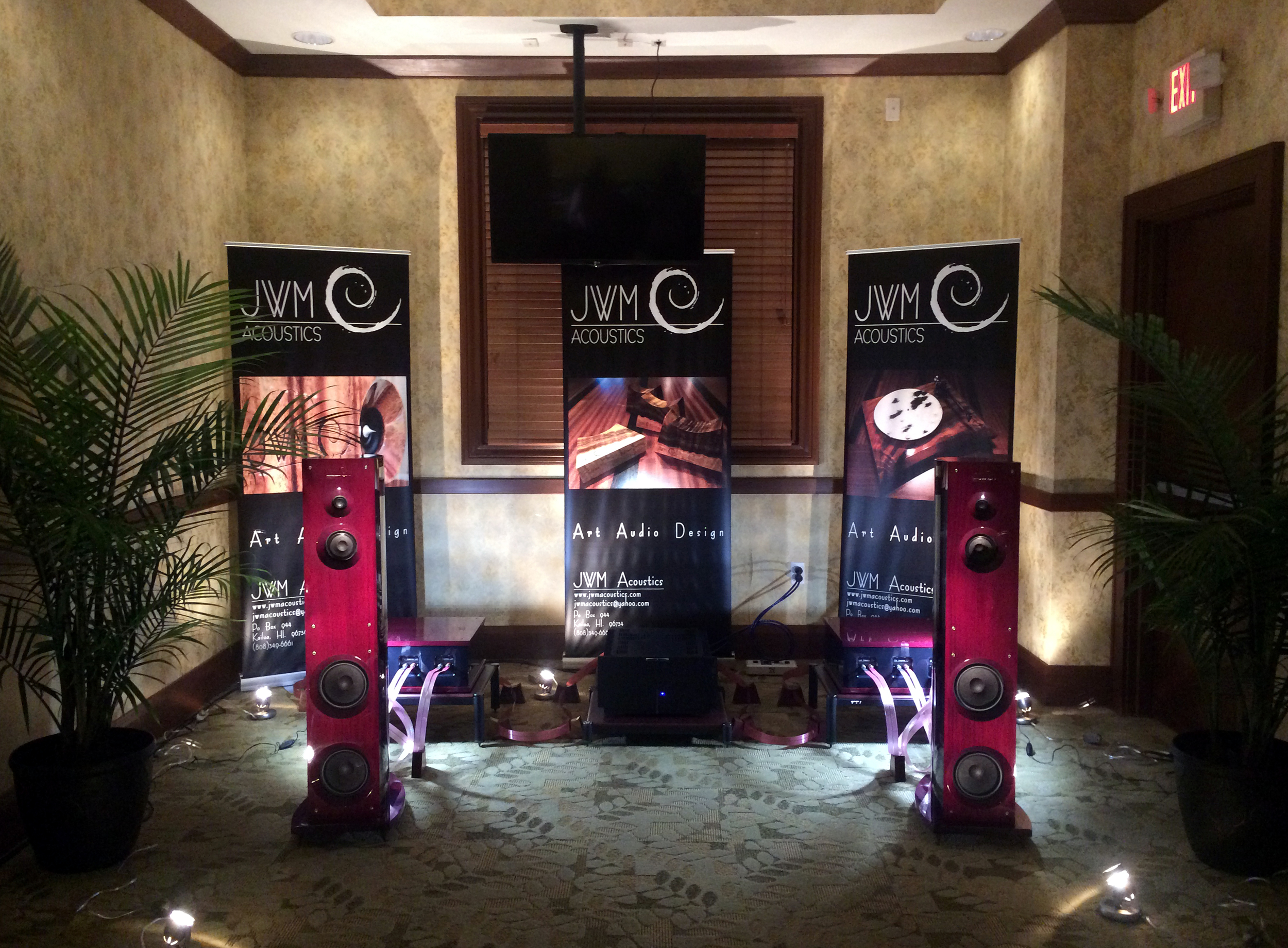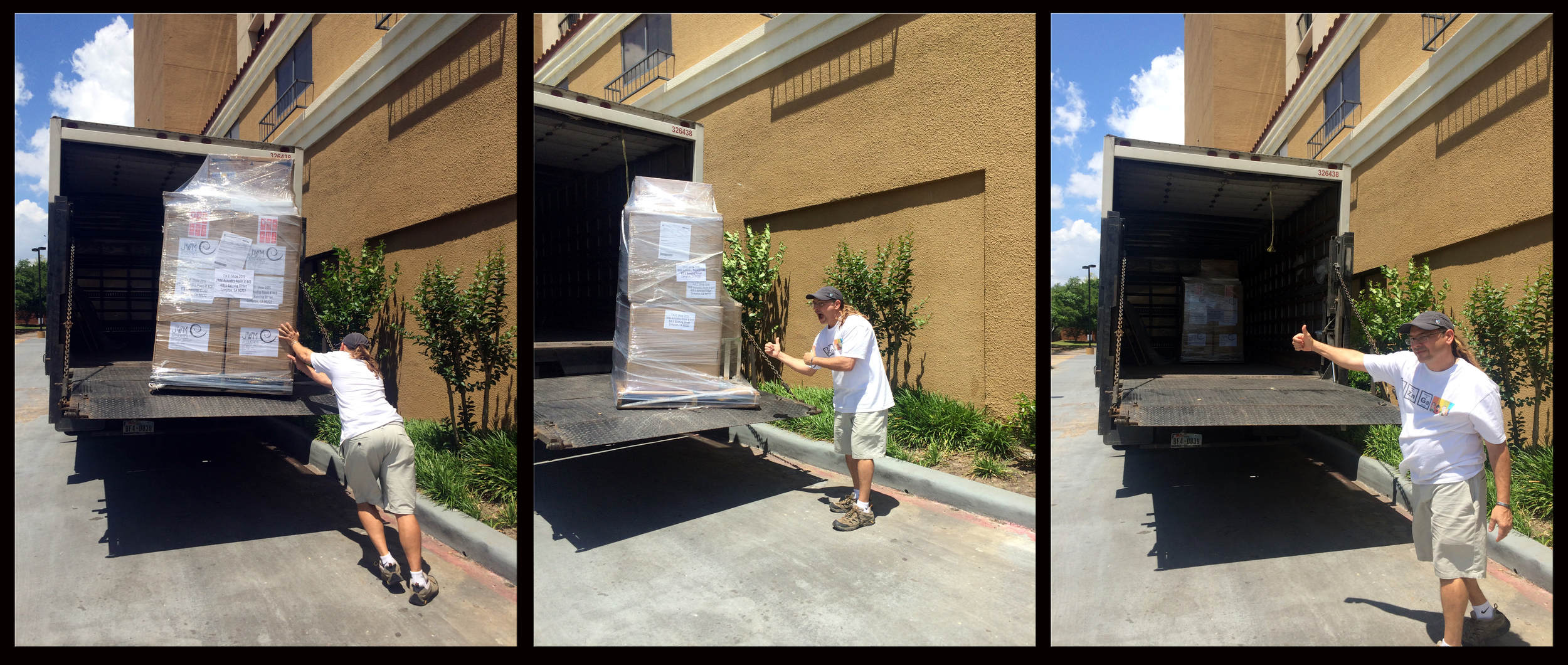 So, I have several friends asking me why I am still so adamant about analog recordings and playback. After about 3 seconds of vinyl from my system, they say “OH”! “That’s why”! Then, usually a few “ARE YOU KIDDING ME’s”, ”THAT’S A RECORD’s” come out. Something happens in the room. Nine times out of ten, after a few short moments, the conversations in the room diminish. The talk of politics, fine wine, religion and the blow-by-blow of the cruise your friend just got back from are silenced. You see, there is something magical about analog playback. It demands your attention. So rarely have I seen this same reaction when a CD, or file is being played. The conversations continue with music simply becoming a white noise back ground to the evening. Not so with records or LP’s. Something happens to the air in the room and the music takes front row to the evening. People listen… I have many jargon laden theories for this, but I‘ll try not to get too technical here. Instead, I’ll Just Try to keep it simple and possibly spark an argument about why analog is so beautiful.
So, I have several friends asking me why I am still so adamant about analog recordings and playback. After about 3 seconds of vinyl from my system, they say “OH”! “That’s why”! Then, usually a few “ARE YOU KIDDING ME’s”, ”THAT’S A RECORD’s” come out. Something happens in the room. Nine times out of ten, after a few short moments, the conversations in the room diminish. The talk of politics, fine wine, religion and the blow-by-blow of the cruise your friend just got back from are silenced. You see, there is something magical about analog playback. It demands your attention. So rarely have I seen this same reaction when a CD, or file is being played. The conversations continue with music simply becoming a white noise back ground to the evening. Not so with records or LP’s. Something happens to the air in the room and the music takes front row to the evening. People listen… I have many jargon laden theories for this, but I‘ll try not to get too technical here. Instead, I’ll Just Try to keep it simple and possibly spark an argument about why analog is so beautiful.
Why analog? We live in an age where so many amazing machines are capable of reproducing some of the most amazing sounds. We live in an age where bits are bits rite? Not so fast amigo. We live in an analog world don’t we? To this day, with all this technology and I’ve heard the best, we still have not been able to conquer absolute nature and physics as it pertains to vibrations in sound. After all, that is what sound is. Vibrations in the air. Air that is excited by the instrument being played. Not just one vibration though. Many vibrations working with and against each other either in harmony, or in conflict. The conflicting and resonant values that emerge ARE what make the difference between “Live” and “Memorex”. I call this “Harmonic Conflict” Some engineers call it “Dynamic Harmonics”, others “Dynamic Resonance” or “Emotional Dynamics”. Something the digital world has yet to see, or “HEAR”.
 If we cannot reproduce all the small nuances of each and every “Harmonic Conflict”, we lose the “Live” performance. These small details ARE what make the sound “LIVE”. For example, we hear a live band and get an emotional contact with the performers. This is not only due to the performance, but to the environment we are observing the performance within. The echoes from the back of the hall. The small reflection of sound coming from the rear of the bass stack that bounces off the front of the bass drum at just the right angle. The vibrations in the plastic seats. The cough, the clinking glass, the flutter and squeak of rosin that may not be heard on the digital kit, but cannot escape the magnetic tape. Well, you may hear the squeak, but not the way that squeak bounces about the room and the air that surrounds it. Even more difficult in the digital realm is that air around the squeak. The color and texture of it. Something that comes natural in the analog world.
If we cannot reproduce all the small nuances of each and every “Harmonic Conflict”, we lose the “Live” performance. These small details ARE what make the sound “LIVE”. For example, we hear a live band and get an emotional contact with the performers. This is not only due to the performance, but to the environment we are observing the performance within. The echoes from the back of the hall. The small reflection of sound coming from the rear of the bass stack that bounces off the front of the bass drum at just the right angle. The vibrations in the plastic seats. The cough, the clinking glass, the flutter and squeak of rosin that may not be heard on the digital kit, but cannot escape the magnetic tape. Well, you may hear the squeak, but not the way that squeak bounces about the room and the air that surrounds it. Even more difficult in the digital realm is that air around the squeak. The color and texture of it. Something that comes natural in the analog world.
 Yes, magnetic tape I say is absolutely just as analog as the vibrations in the air. You see, the tiny flecks of magnetic material are there to be laid out in a pattern which reflects exactly what the live performance is. An analog copy of the air that is being exited by the instruments on the stage. Vibrational butterflys caught in a magnetic net if you will. In a perfect world, which this can be, the wings of that butterfly can be observed over and over again without damaging there iridescence. Yes! That’s it! Iridescence of the sound is what the digital world has yet to conquer! (Ahhhh, that took some time.)
Yes, magnetic tape I say is absolutely just as analog as the vibrations in the air. You see, the tiny flecks of magnetic material are there to be laid out in a pattern which reflects exactly what the live performance is. An analog copy of the air that is being exited by the instruments on the stage. Vibrational butterflys caught in a magnetic net if you will. In a perfect world, which this can be, the wings of that butterfly can be observed over and over again without damaging there iridescence. Yes! That’s it! Iridescence of the sound is what the digital world has yet to conquer! (Ahhhh, that took some time.)
 Why, you ask? It’s not a simple answer, but I’ll try. You see, vibration is complicated. When we are talking about live music, we are dealing with many layers of vibration. Layer on layer on layer, perhaps till 1,000 layers or more, for the simple sound of rosin on a bow. To recreate the sound of something as simple a E string on the guitar, there may be as many as 10,000 layers! Now, Take these layers and lay them out on a graph. First at the bottom, 10,000 at the top. Left of the graph is 0 seconds; right of the graph is 5 seconds. (Big exaggeration for this purpose)When we first pluck the string, there is a wave that is created. That wave is made up of many vibrations. Each is dependent on the material of the string, the way it was plucked and the fingernail polish the musician put on this morning, amongst other factors. Part of that wave at 1.5 seconds may react as a harmonic or conflict with a vibration at 1.9 seconds. This meeting of vibrations is bound to create another vibration all together! Then another at 2.5 second, 3.4 seconds 4.7 seconds and so on. (Again, big exaggeration) Each of these will create the “E” we are so familiar with. Now add the acoustical environment itself into the mix. Each of these original vibrations must now react with the room. That room has its own set of resonant frequencies as well. We call these modes. In other words, That “E” aint just an “E” after all. This is the iridescent sound I spoke of earlier. Not just one wave of equal vibration, but an ever growing and evolving tone which slowly builds within the room, then decays into silence again. Try to picture this mixed with 300 more plucks of the strings in different scales. It becomes an absolutely absurd amount of information. To this day, no digital device has been created that will take that 1.2 second wave and harmonize it with the 3.7 second wave, account for the room modes and the color of polish on the musicians nails. Instead, all those processors see is a constant flow of ones and zeroes. No nuance, no emotion, just dots and dashes.
Why, you ask? It’s not a simple answer, but I’ll try. You see, vibration is complicated. When we are talking about live music, we are dealing with many layers of vibration. Layer on layer on layer, perhaps till 1,000 layers or more, for the simple sound of rosin on a bow. To recreate the sound of something as simple a E string on the guitar, there may be as many as 10,000 layers! Now, Take these layers and lay them out on a graph. First at the bottom, 10,000 at the top. Left of the graph is 0 seconds; right of the graph is 5 seconds. (Big exaggeration for this purpose)When we first pluck the string, there is a wave that is created. That wave is made up of many vibrations. Each is dependent on the material of the string, the way it was plucked and the fingernail polish the musician put on this morning, amongst other factors. Part of that wave at 1.5 seconds may react as a harmonic or conflict with a vibration at 1.9 seconds. This meeting of vibrations is bound to create another vibration all together! Then another at 2.5 second, 3.4 seconds 4.7 seconds and so on. (Again, big exaggeration) Each of these will create the “E” we are so familiar with. Now add the acoustical environment itself into the mix. Each of these original vibrations must now react with the room. That room has its own set of resonant frequencies as well. We call these modes. In other words, That “E” aint just an “E” after all. This is the iridescent sound I spoke of earlier. Not just one wave of equal vibration, but an ever growing and evolving tone which slowly builds within the room, then decays into silence again. Try to picture this mixed with 300 more plucks of the strings in different scales. It becomes an absolutely absurd amount of information. To this day, no digital device has been created that will take that 1.2 second wave and harmonize it with the 3.7 second wave, account for the room modes and the color of polish on the musicians nails. Instead, all those processors see is a constant flow of ones and zeroes. No nuance, no emotion, just dots and dashes.
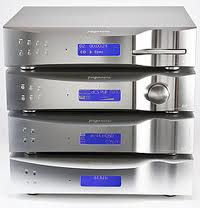 The digital realm is getting closer as processing speeds get faster, but any “Live” sound we hear from this format is usually an algorithm created by a programmer or engineer. In the case of DCS, a fantastic digital company on the cutting edge of digital reproduction, (and a few select others) it has become an art form all its own. Effectively so, at that! I have yet to hear better or closer to analog from any other machines other than DCS. In other words, I am not opposed to digital in any way! It is a fantastic tool that gets better every day. Unfortunately, there will always be a limit to this madness. In the analog world, there is no limit what so ever! All those layers on the graph are able to dance about as they wish, with no limit to the amount of bits and bytes they can be compressed into. “LIVE”! Nowhere in nature, did a super computer dictate just how loud and with how much attack and decay Krakatoa would erupt.
The digital realm is getting closer as processing speeds get faster, but any “Live” sound we hear from this format is usually an algorithm created by a programmer or engineer. In the case of DCS, a fantastic digital company on the cutting edge of digital reproduction, (and a few select others) it has become an art form all its own. Effectively so, at that! I have yet to hear better or closer to analog from any other machines other than DCS. In other words, I am not opposed to digital in any way! It is a fantastic tool that gets better every day. Unfortunately, there will always be a limit to this madness. In the analog world, there is no limit what so ever! All those layers on the graph are able to dance about as they wish, with no limit to the amount of bits and bytes they can be compressed into. “LIVE”! Nowhere in nature, did a super computer dictate just how loud and with how much attack and decay Krakatoa would erupt. Nowhere in nature was there a hard drive that stated, you can only record between 20 and 20,000 HTZ. And at 98 dB for that matter. Analog has no limitations on the nuance of a real performance. The only limit is to the dynamic capability of the medium. As technology has it, even in 1955, we could have recorded the sound of Krakatoa, quite believably and with little effort. With modern tape we could have scared the crap out of God. No joke. This is simply not possible in most modern digital studios though. I say most, for there are machines that could do it well, just not with the reality of the actual Dynamic Conflicts of such a sound. It’s just too big for anything but analog. HA!
Nowhere in nature was there a hard drive that stated, you can only record between 20 and 20,000 HTZ. And at 98 dB for that matter. Analog has no limitations on the nuance of a real performance. The only limit is to the dynamic capability of the medium. As technology has it, even in 1955, we could have recorded the sound of Krakatoa, quite believably and with little effort. With modern tape we could have scared the crap out of God. No joke. This is simply not possible in most modern digital studios though. I say most, for there are machines that could do it well, just not with the reality of the actual Dynamic Conflicts of such a sound. It’s just too big for anything but analog. HA!
 Now, the play-back part. Analog is all about real world sound. Not digitized fax printed in dots and dashes, or ones and zeros. Again, we live in an analog world don’t we? Is the sound of a slightly out of tune Oboe playing 5 rows in front of you a digital image? No. Is the dog barking just over the fence a digital recording played through a small speaker hanging on his colar? No. So is music vibration? Yes! Vibration that is, if properly recorded in the ANALOG realm. A well-tuned turntable and cartridge/preamp/amp/speaker kit will pick up those EXACT same vibrations. This is true recording/play-back as the rules of physics and nature dictate. Not some processor in a laptop. (Don’t get me wrong, I record most of my albums from my turntables to a hard drive. This is for convenience only. I like to hear vinyl at the beach as well!) LP play-back is a tiny needle picking up those same vibrations from a groove in a record. That vibration is transmitted up the cantilever to a magnetic coil, much like the tape I mentioned earlier. That signal is then sent to the rest of your kit, ultimately ending up in another magnetic device called a transducer. (Your speaker)That speaker vibrates the air just like the instrument vibrated the microphone on the other end of the chain! Simple!!! Analog!!!
Now, the play-back part. Analog is all about real world sound. Not digitized fax printed in dots and dashes, or ones and zeros. Again, we live in an analog world don’t we? Is the sound of a slightly out of tune Oboe playing 5 rows in front of you a digital image? No. Is the dog barking just over the fence a digital recording played through a small speaker hanging on his colar? No. So is music vibration? Yes! Vibration that is, if properly recorded in the ANALOG realm. A well-tuned turntable and cartridge/preamp/amp/speaker kit will pick up those EXACT same vibrations. This is true recording/play-back as the rules of physics and nature dictate. Not some processor in a laptop. (Don’t get me wrong, I record most of my albums from my turntables to a hard drive. This is for convenience only. I like to hear vinyl at the beach as well!) LP play-back is a tiny needle picking up those same vibrations from a groove in a record. That vibration is transmitted up the cantilever to a magnetic coil, much like the tape I mentioned earlier. That signal is then sent to the rest of your kit, ultimately ending up in another magnetic device called a transducer. (Your speaker)That speaker vibrates the air just like the instrument vibrated the microphone on the other end of the chain! Simple!!! Analog!!!
 Trouble with this business is, the majority of LPs sold to audiophiles are old titles. VERY old titles. A catalog in which one sees an overabundance of such christian names as Miles and Jimi and Ella and Pink: Great old stuff, but we already have it. Some great new stuff is available on vinyl, too: Bonnie Prince Billy, the Spoons, Joanna Newsome, Punch Brothers, Michael Tilson, Thomas and the San Francisco Symphony. Trouble is, all of them are digital recordings. And while I’m grateful when a record company prints a small percentage of their titles on vinyl, the miracle is scarcely different from when book publishers print a small percentage of their books in large print additions. The vast majority though, are released as crappy MP3 or some other compressed format. But even that is not such a big deal: I may be thin skinned, but as long as I can buy what I want, I don’t particularly care why it is being sold. The problem is, an analog pressing of a digital recording is still a digital recording. And the “Better” the mastering job, the more digital the results will be. If you leave a pointillist watercolor out in the rain, dots will run. But there still just dots.
Trouble with this business is, the majority of LPs sold to audiophiles are old titles. VERY old titles. A catalog in which one sees an overabundance of such christian names as Miles and Jimi and Ella and Pink: Great old stuff, but we already have it. Some great new stuff is available on vinyl, too: Bonnie Prince Billy, the Spoons, Joanna Newsome, Punch Brothers, Michael Tilson, Thomas and the San Francisco Symphony. Trouble is, all of them are digital recordings. And while I’m grateful when a record company prints a small percentage of their titles on vinyl, the miracle is scarcely different from when book publishers print a small percentage of their books in large print additions. The vast majority though, are released as crappy MP3 or some other compressed format. But even that is not such a big deal: I may be thin skinned, but as long as I can buy what I want, I don’t particularly care why it is being sold. The problem is, an analog pressing of a digital recording is still a digital recording. And the “Better” the mastering job, the more digital the results will be. If you leave a pointillist watercolor out in the rain, dots will run. But there still just dots.
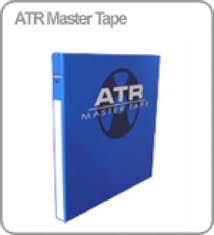 Between the years of 2005-2007 there was no magnetic tape being made. PERIOD. In 2008 an American company called ATR began making tape, primarily for the pro market. THIS WAS GREAT NEWS FOR THE ANALOG FANS!!!! Now in its fourth year-the company also services and remanufactures AMPEX ATR 102 studio decks, (standard of the industry) and has done so since 1991-the company has yet to turn a profit, but a number of grateful engineers and recording artists have praised there work. GOD helps them to carry on the good work…
Between the years of 2005-2007 there was no magnetic tape being made. PERIOD. In 2008 an American company called ATR began making tape, primarily for the pro market. THIS WAS GREAT NEWS FOR THE ANALOG FANS!!!! Now in its fourth year-the company also services and remanufactures AMPEX ATR 102 studio decks, (standard of the industry) and has done so since 1991-the company has yet to turn a profit, but a number of grateful engineers and recording artists have praised there work. GOD helps them to carry on the good work…
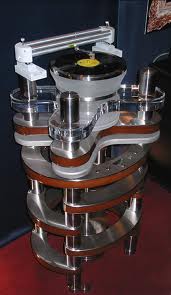 When looking for vinyl, used or new, I look to see if the recording was made in the analog realm originally. Not hard if you are a 1950s jazz nut like me. I also look for the company who pressed it and the producer who put down the final mixed goodies. All make a difference. One silly rule of mine: if I find two copies of the same record, one pressed in the US between 1965-1988, and the other pressed in Europe at any time, the one pressed overseas is the choice. Generally they are 180-200 gram vinyl and are of a much higher quality. These days, most of what you see in re-prints, whether from the US or not, is in 180-200 gram vinyl anyway! I have to give props to this latest generation of engineers for this trend. More and more are being pressed in a phenomenal quality here at home in the USA!!! The pressings I have experienced lately are fantastic! Better than ever as far as I am concerned. Bigger grooves, more released in 45Rpm versions! Quieter and blacker backgrounds yielding more room for the music and system to sing! This is really looking promising for us fans of the big black disk! There are many more things to look for when buying records, but I’ll leave that to a later blog.
When looking for vinyl, used or new, I look to see if the recording was made in the analog realm originally. Not hard if you are a 1950s jazz nut like me. I also look for the company who pressed it and the producer who put down the final mixed goodies. All make a difference. One silly rule of mine: if I find two copies of the same record, one pressed in the US between 1965-1988, and the other pressed in Europe at any time, the one pressed overseas is the choice. Generally they are 180-200 gram vinyl and are of a much higher quality. These days, most of what you see in re-prints, whether from the US or not, is in 180-200 gram vinyl anyway! I have to give props to this latest generation of engineers for this trend. More and more are being pressed in a phenomenal quality here at home in the USA!!! The pressings I have experienced lately are fantastic! Better than ever as far as I am concerned. Bigger grooves, more released in 45Rpm versions! Quieter and blacker backgrounds yielding more room for the music and system to sing! This is really looking promising for us fans of the big black disk! There are many more things to look for when buying records, but I’ll leave that to a later blog.
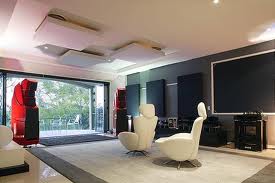 Look, I guess the simple answer to whether analog, or digital is the way for you to go is, does it move you? Does it bring back a memory? Can it suck you in and evoke an emotional response? Does it make you smile, or frown and sniffle in other words. Does the music demand your attention? Do the guests in the room go quiet and just listen? That is what music is really supposed to do. It can be either medium as far as I’m concerned, just as long as it gives me that sense of “LIVE” I crave. I just happen to get that feeling from the big black disk. More now, than ever before. So, "Is it real, or is it Memorex"? End of story? Perhaps not…
Look, I guess the simple answer to whether analog, or digital is the way for you to go is, does it move you? Does it bring back a memory? Can it suck you in and evoke an emotional response? Does it make you smile, or frown and sniffle in other words. Does the music demand your attention? Do the guests in the room go quiet and just listen? That is what music is really supposed to do. It can be either medium as far as I’m concerned, just as long as it gives me that sense of “LIVE” I crave. I just happen to get that feeling from the big black disk. More now, than ever before. So, "Is it real, or is it Memorex"? End of story? Perhaps not…
Keep your records clean ya’ll!
JWM
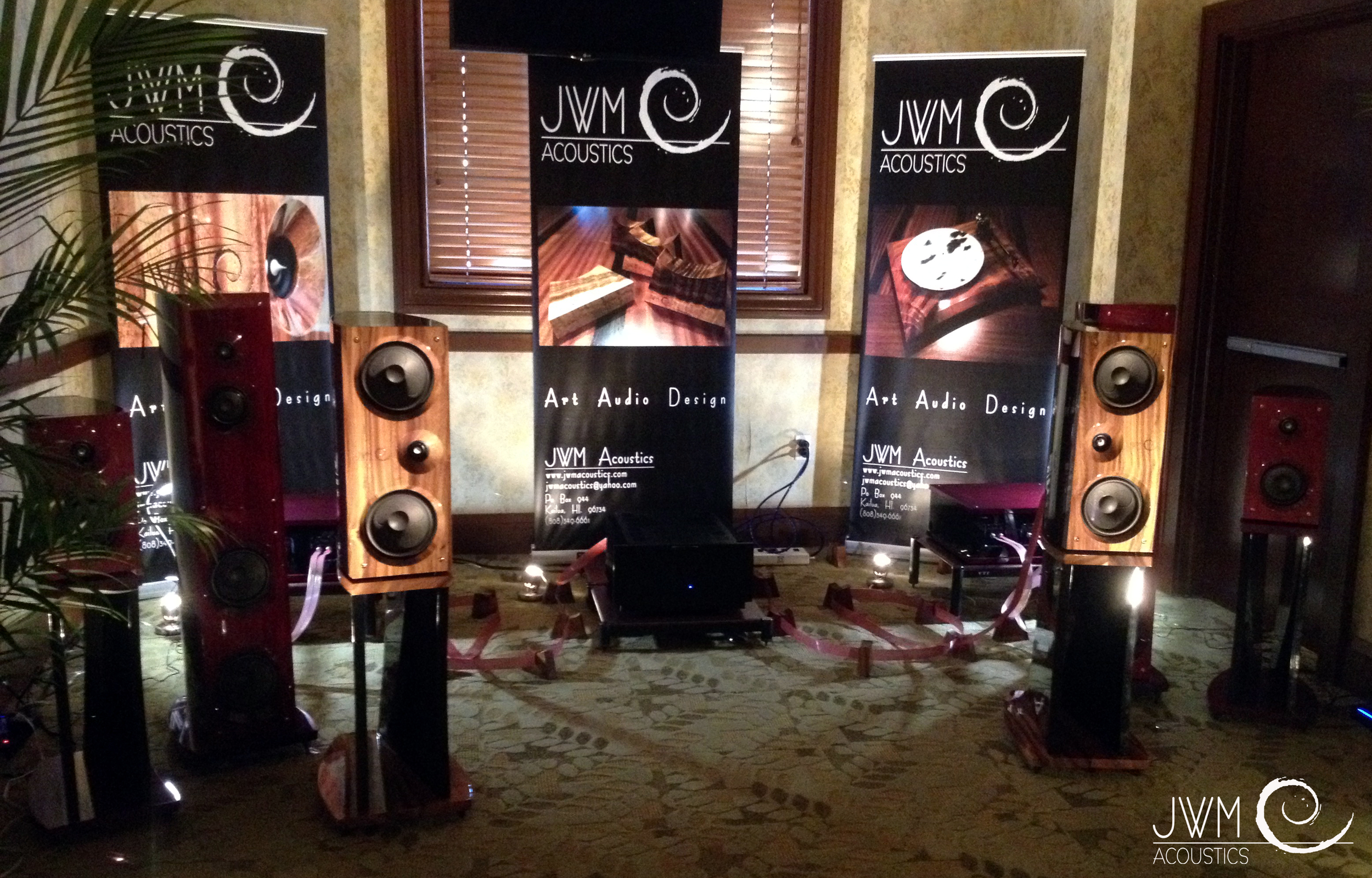 For T.H.E. SHOW, JWM has chosen to bring 3 sets of speakers. The NET-1 mini monitor, the ALYSON AML large monitor and the JANE JKM floor standing flagship. Also included in the collection will be the KAREN 6 and 3 turntables and several examples of HI-FI accessories including Cable Cradles in several wood species and sizes.
For T.H.E. SHOW, JWM has chosen to bring 3 sets of speakers. The NET-1 mini monitor, the ALYSON AML large monitor and the JANE JKM floor standing flagship. Also included in the collection will be the KAREN 6 and 3 turntables and several examples of HI-FI accessories including Cable Cradles in several wood species and sizes.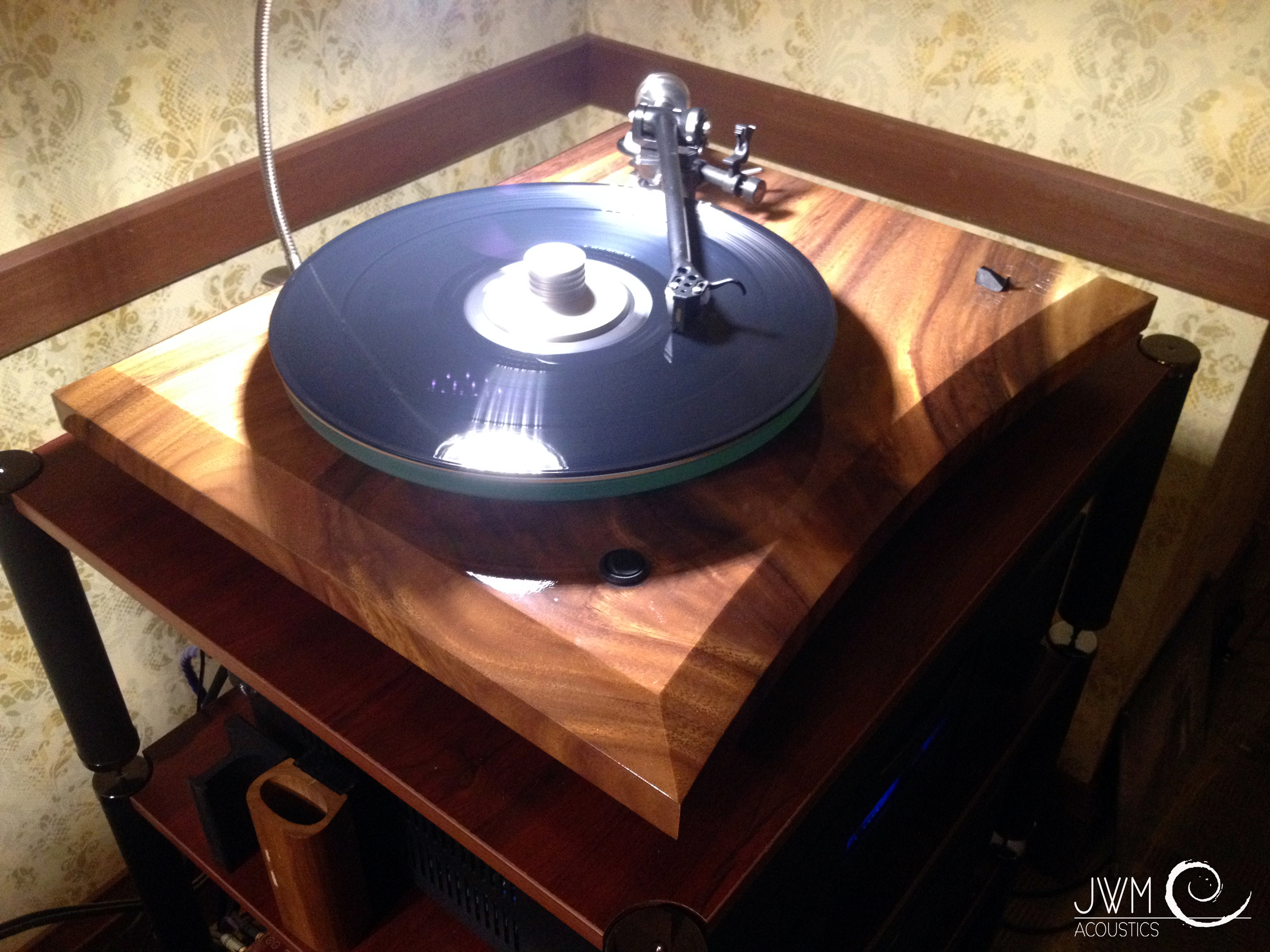 As before, We will be showing with a great system. We are proud to have names like Balanced Audio Technology, Nordost, OPPO and Ortofon in the room with us and we certainly plan on making a splash. If you care to join us, don’t hesitate to contact us, or simply show up and bring some tunes! We will have the ability to spin discs, files and of course vinyl so feel free to ask for a demo with the stuff you love to hear.
As before, We will be showing with a great system. We are proud to have names like Balanced Audio Technology, Nordost, OPPO and Ortofon in the room with us and we certainly plan on making a splash. If you care to join us, don’t hesitate to contact us, or simply show up and bring some tunes! We will have the ability to spin discs, files and of course vinyl so feel free to ask for a demo with the stuff you love to hear. ALYSON AML Large monitor in Monkeypod
NET-1 Mini monitor in Purple heart
KAREN 3 Turntable in Monkeypod
KAREN 6 Turntable and external power supply in Monkeypod
ALYSON AML Large monitor in Monkeypod
NET-1 Mini monitor in Purple heart
KAREN 3 Turntable in Monkeypod
KAREN 6 Turntable and external power supply in Monkeypod
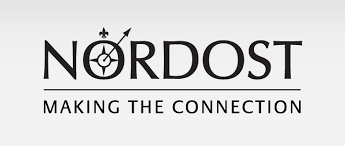 Balanced Audio Technology VK-6550SE Power Amplifier
OPPO BD-105D Digital player
Nordost Qbase Power distribution
Nordost Qv2 and QK1 Line conditioning Units
All the audio cables and power cables will be provided by Nordost
Balanced Audio Technology VK-6550SE Power Amplifier
OPPO BD-105D Digital player
Nordost Qbase Power distribution
Nordost Qv2 and QK1 Line conditioning Units
All the audio cables and power cables will be provided by Nordost  including examples of the Heimdall, and Lief lines.
including examples of the Heimdall, and Lief lines.
